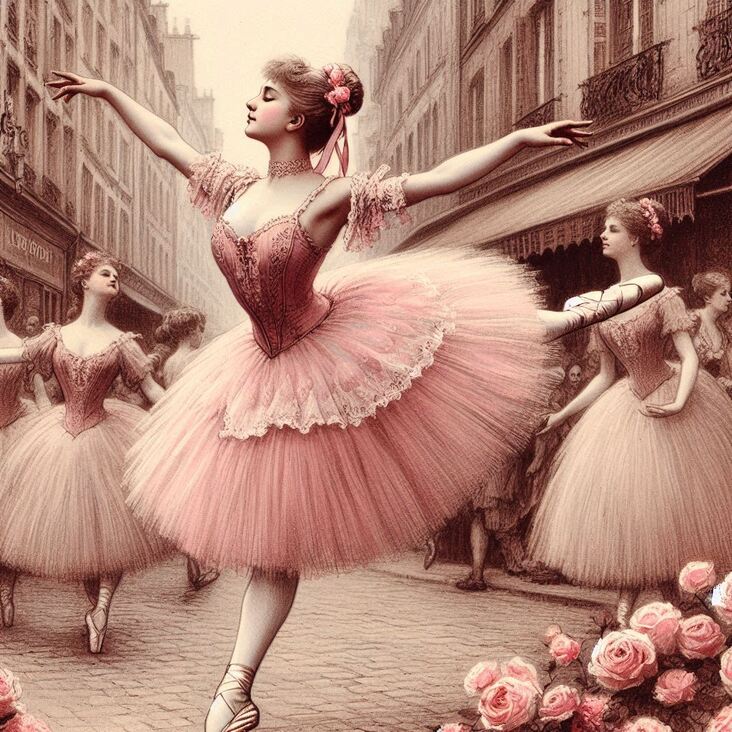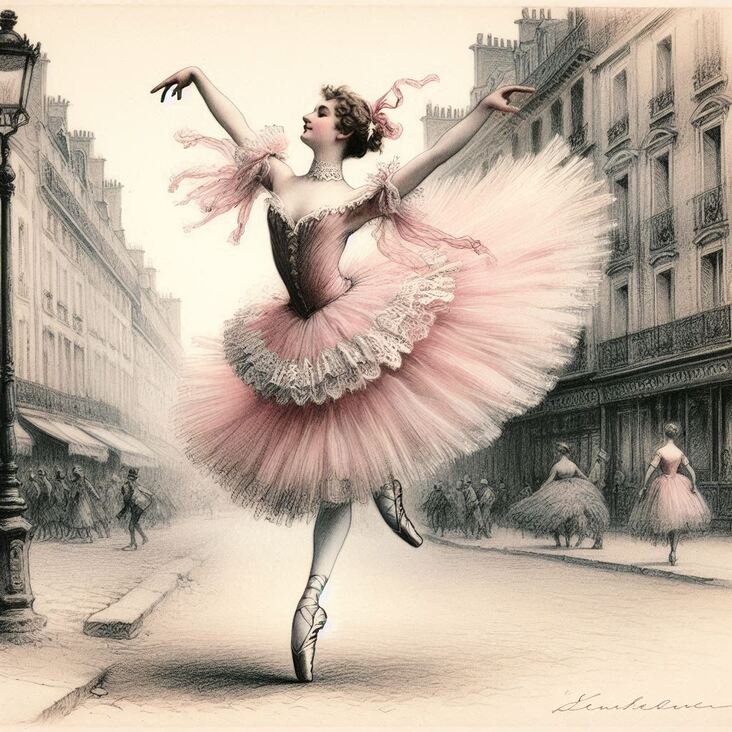
Hello lovelies, and welcome back to Pink Tutu, your one-stop shop for all things sparkly and swishy! Today's #TutuTuesday is taking us on a little trip back in time, all the way to December 2nd, 1862. This week's blog post is a little different – a bit of a historical detective adventure, if you will! I've been looking at what tutus were like in the Victorian era, and there seems to be some... well... mystery.
For a little bit of background – I'm your girl Emma, coming to you from the Derbyshire hills with a penchant for pink, a passion for performance, and a lifelong love of the twirl. I may have travelled to you by time-machine (hush, hush! I have my secrets!) but I'm here to spread the tutu-love, one sparkly layer at a time.
Now, when we think of 1862 and tutus, you're probably picturing those full-length, frilly creations with layers upon layers of tulle that you see in photos from the Belle Époque era (which we'll get to soon, don't worry!), but they weren't really like that yet.
A Matter of Skirt-itage
Remember the gorgeous "skirt-dance" style ballet of the time? Think delicate hops, gentle poses, and maybe a very light flutter of the dress, sans tulle. Ballet costumes at that time, for ballerinas, were quite... restrained! Yes, the very first, "tutu-esque" tutus existed but they were actually pretty basic - they were basically those fitted "short skirts" worn by early ballerinas, but just a little shorter than usual, with some layering underneath to add shape. It’s fascinating to me, all those dancers performing in such simple clothing, with none of the incredible shapes and volumes we have today!
Where’s the "Tutu" Though?
Now, I haven't even mentioned the word "tutu" yet – and here’s why. While "tutu" did pop up here and there in fashion publications by this time (although mainly referring to a specific sort of fluffy bird – imagine!), the name hadn’t truly become connected to those super short, bouncy skirts that are practically designed for leaping! The “tutu” name stuck as we progressed towards the 1880s with the arrival of those grand tutus that we know and love, all frills and fluff.
So, what happened in that gap between the 1860s and the 1880s? Why did the “tutu” transform from simple skirts to those airy wonders we see in Giselle and Swan Lake?
Well, that's for next week's #TutuTuesday! I've got more details to share – like a revolutionary ballerina who really pushed the boundaries of movement and fashion and changed what it meant to be a ballerina forever, just waiting to be discovered.
Stay Tuned, Sweethearts!
Until then, I’m heading to the ballet, all ready to see how contemporary dance pays homage to these past designs! I’m on the lookout for all those fashion elements that carry on through time, and I’ll tell you about it next Tuesday – so keep a look out for Pink Tutu. And while you're waiting, I'm always looking for tutu inspiration – do you have a favourite tutu story from this era, or another era? Share it with me!
I'll be adding all your ideas to my next blog post – remember, I need all your amazing stories and photos to keep this tutu-tastic journey going. And always remember, darling – it’s never too late to don a pink tutu. Have a brilliant week, darlings. I'll be back next Tuesday, with more fabulous ballet secrets.
Keep twirling,
Emma
TutuTuesday #ballet #history #fashion #1862 #Victorian #dance #pinktutu #tututimeEmma's Notes:
This week, we were graced with the performance of La Fille Mal Gardée at The Royal Opera House in Covent Garden, a delight from start to finish! It’s so good to see these earlier tutu styles showcased - such graceful moves. Plus, it's always good to meet fellow fashion-obsessed ballet fans like myself! I spotted this amazing little French café across the street – "Cafe de Paris." Fancy name, lovely tea, perfect for post-ballet refreshment!

